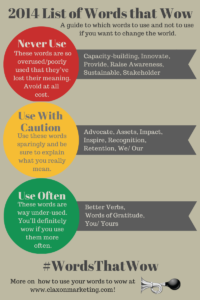 Did you feel a slight shift in the atmosphere last Wednesday at 1pm Pacific? A wave of well-being that you couldn’t place? A yearning to thank your barista just a little bit more vociferously than usual?
Did you feel a slight shift in the atmosphere last Wednesday at 1pm Pacific? A wave of well-being that you couldn’t place? A yearning to thank your barista just a little bit more vociferously than usual?
That’s because right about then me, Shanon Doolittle, and about 250 of our closest friends were dishing about good gratitude. Good grief did we have fun!
Shanon always wows with her practical, yet totally inspired tips for donor love. The Goddess of Gratitude did not disappoint. (I wasn’t actually counting but I think 376 is a pretty good guestimate of how many ideas Shanon gave out during the webinar. All very doable, by the way.)
Want to hear a surprising thing Shanon said about writing a thank you note?
Don’t start with: “Thank you for…”
Nope, start with something zippier. You expect a thank you note to start with the words “Thank you.” The expected rarely dazzles a donor. (The Wordifier has your back when it comes to finding better words, don’t you worry.)
Kiss boring thank you notes to curb and get your gratitude train going full steam ahead as you head into 2017. Listen to the recording of this free, fun-filled webinar.
(Plus you’ll learn how Shanon and I met, which is a fun little story.)
Listen right here, right now. >>
 In sifting through the data from our
In sifting through the data from our  I would maintain that thanks are the highest form of thought; and that gratitude is happiness doubled by wonder. ~G.K. Chesterton
I would maintain that thanks are the highest form of thought; and that gratitude is happiness doubled by wonder. ~G.K. Chesterton Last week Seattle nonprofits were gearing up for
Last week Seattle nonprofits were gearing up for